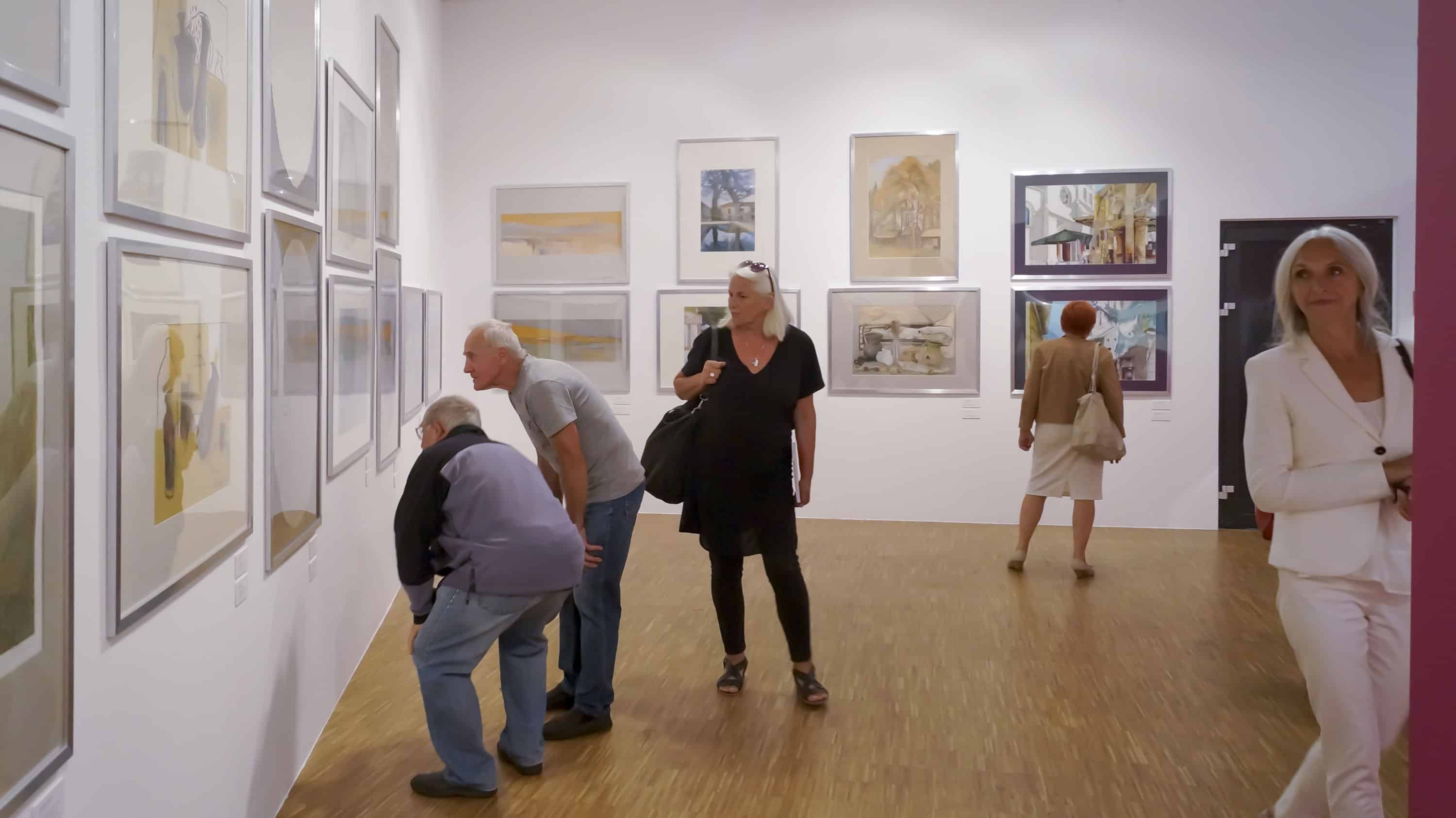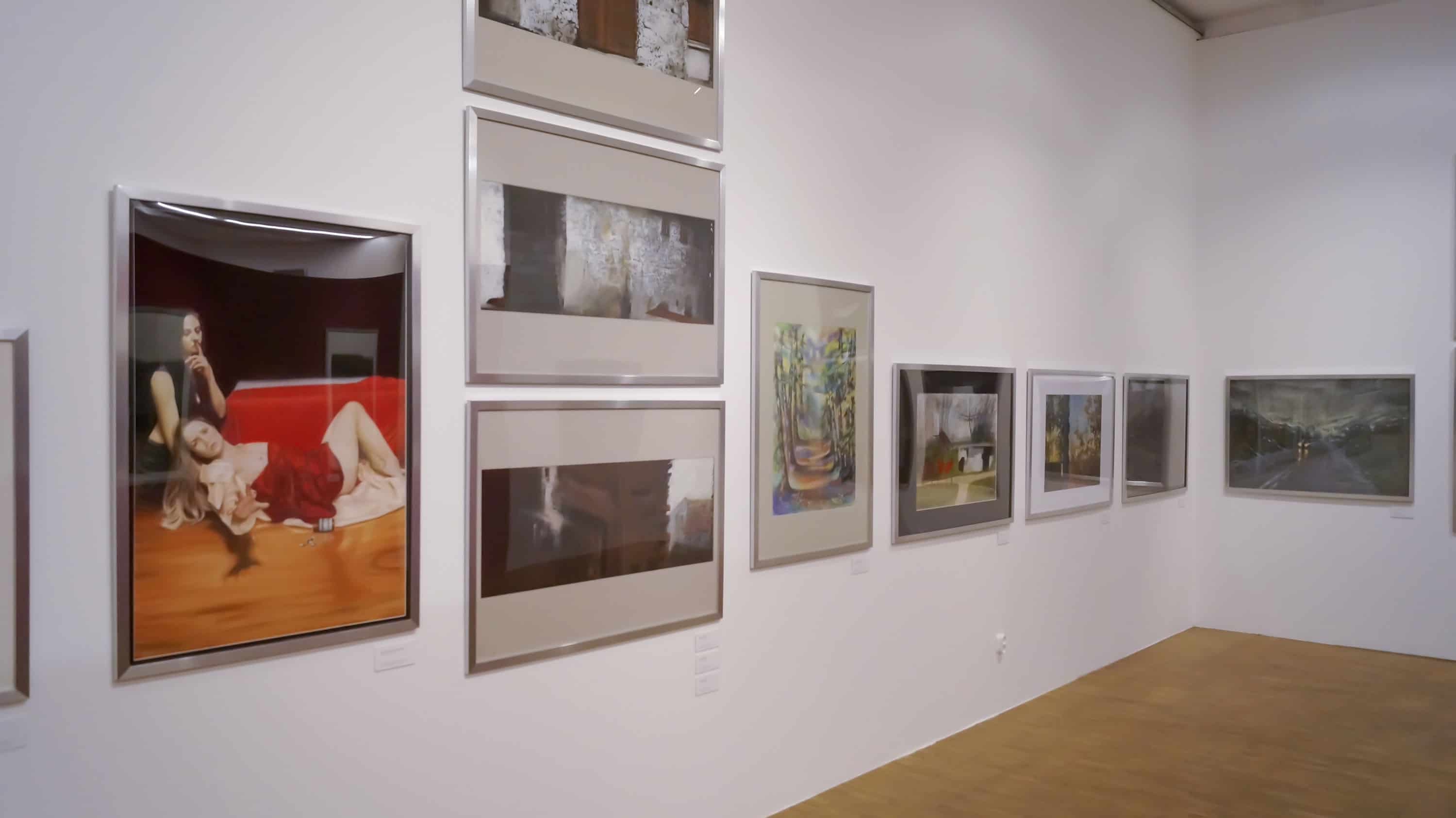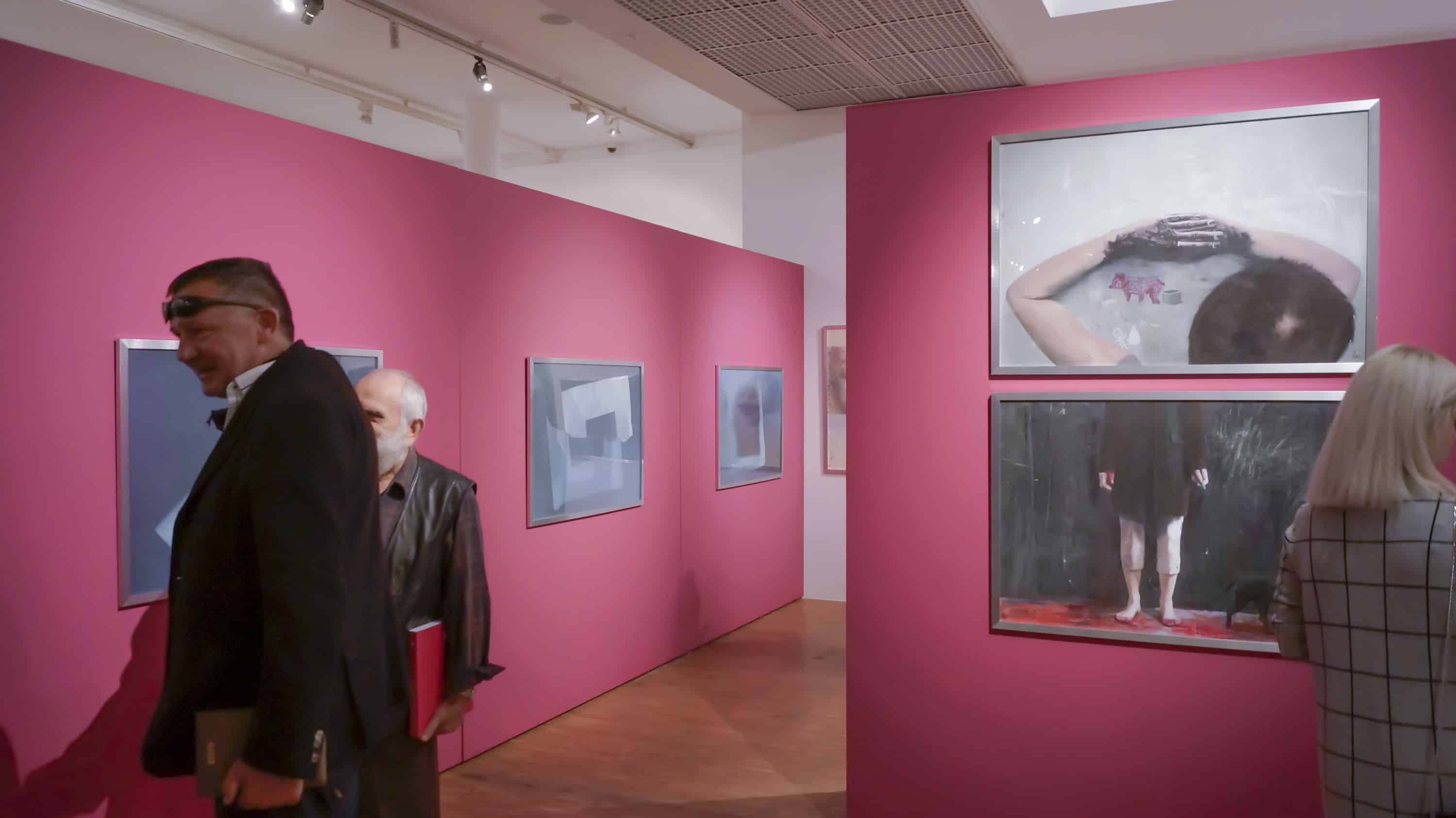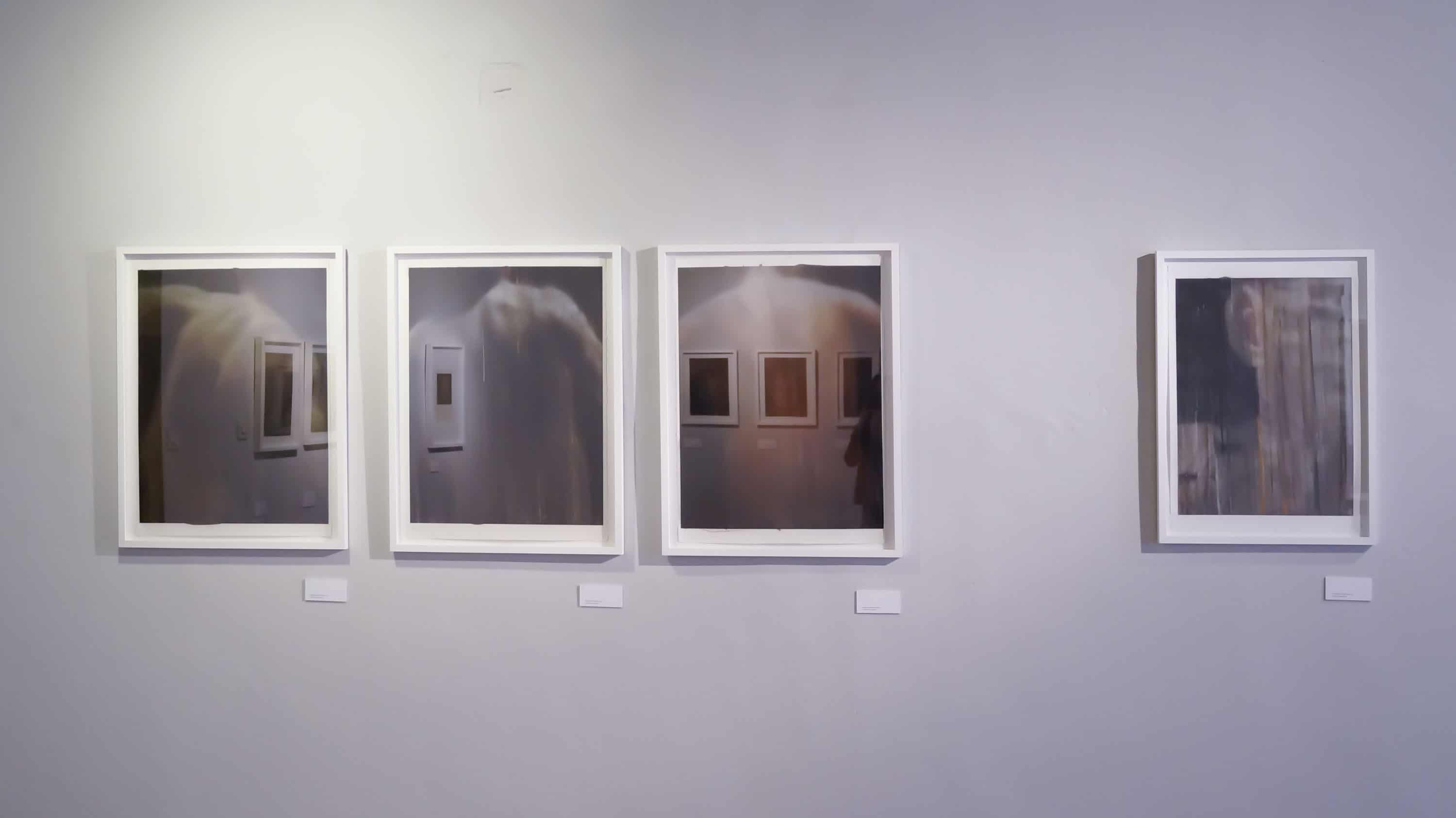The 7th edition of International Pastel Biennial opened up this Friday in Nowy Sącz. The history of this event dates back 30 years. During this period the contest became widely recognized internationally. The event made everybody realize how popular pastel still is and how much room for creativity and individuality it provides to artists who use it.
We talked to the Biennial curators, Ewa Rams and Krzysztof Kuliś about the enormous amount of entries coming from different parts of the world, the unrestricted freedom that pastel gives to artists, and the ideas for subsequent editions of the contest.

Anna Dziuba: The International Pastel Biennial has been organized for the seventh time this year. Each subsequent edition attracts more participants, contestants from abroad are growing in number and the event is becoming large-scale overall. What have you learnt as organizers of this event over time?
Ewa Rams: Nowy Sącz Pastel Painting Contest was first organized over 30 years ago, in 1987. Its aim was to promote and remind the audience and artists about this painting technique, which is one of the oldest ones available. For the initial contest editions, we invited only the painters living in Poland. As time passed, the level of submitted entries grew and the contest became increasingly popular among artists. This encouraged us to make a bold move in 2002 and transform the contest for Polish artists into the International Pastel Biennial.
For the current edition we have received 335 entries from 34 countries. We are delighted by the fact that we received so many entries from abroad, and that the geographical zone we managed to reach has increased. This year, for the first time ever, we were happy to receive works by artists from Switzerland, Ireland, Portugal, Iran, Sri Lanka, Bangladesh, Ivory Coast and South Africa. This fact alone makes our belief in the everlasting popularity of pastel even stronger. Here we have a genuine proof that artists around the world are willing to use the pastel technique, which really makes our spirits rise. We’re noticing an enormous need for artists to share their achievements and experiences with one another, as well as to establish friendly, long-lasting relationships. We have also observed that artists are achieving proficiency in using this technique again.
Of course, when you organize such a big event, financial issues are one of your top concerns, too. We wouldn’t have been able to organize and successfully conduct two latest editions without the EU funding we had received in the years 2012–2014, and the subsidy from the Minister of Culture and National Heritage of the Republic of Poland which was allocated to us from the dedicated Culture Promotion Fund in the years 2018–2019.

7th International Pastel Biennial, Nowy Sącz, 2019, photo: Anna Dziuba
A.D.: During the previous edition, you – for the first time – decided to invite for cooperation artists who create films and video materials using the pastel painting techniques. Are you going to present any novelties to your audience this year? Tell us what you have prepared for visitors this time?
Krzysztof Kuliś: When we were some time along with the organization of our contest, we received a few queries whether it was allowed to submit films. We found this idea interesting. Video art has been gaining popularity and galleries are now willing to present video works. Taking this into account, we decided to include a separate category for video works in our rules and regulations for the 6th International Pastel Biennial in 2012. We expected an enthusiastic response and a lot of entries in this new category, but, unfortunately, the reality did not satisfy these expectations. Despite that, the video entries we did receive were, in fact, really interesting. Nevertheless, we took opinions of artists and our audience into account and decided that our contest should focus on the pastel technique used in a more conventional manner.
When it comes to novelties this year, we have an online Gallery exhibiting all works qualified for the contest. We introduced the Audience Award, presented to the artist who received the highest number of votes in an online voting by the public. The artist who was chosen by the audience is Hossein Sayyad from Iran, who submitted his work entitled Dream of Peace prepared using dry pastel technique. This year we’ve also decided to use Instagram to promote artists and the underlying concept of the Pastel Biennial. This venture into social media gave us an opportunity to reach a bigger audience.

7th International Pastel Biennial, Nowy Sącz, 2019, photo: Anna Dziuba
A.D.: As we said, there were a lot of pastel works submitted for the contest. Did you notice any central theme or common feature of these works? Is there any visible trend in topic selection?
K.K.: We did not define central topics in the contest regulations. The only formal criterion for participation was using dry pastel or oil pastel technique. This lack of restrictions lets participants submit works on many different topics, following various trends and movements, from realism to abstract art.
E.R.: At the same time, this variety proves that pastel gives artists so many technical possibilities, and that there are virtually no boundaries when it comes to that. You can picture almost everything with pastel. Painting patterns, drawing techniques and the typical brightness of pastels enhances the message that artists want to communicate. Despite its transience and delicacy, this technique is very robust.

Mihai Ciplea, grand Prix winner of the 6th International Pastel Biennial, artwork, Nowy Sącz, 2019, photo: Anna Dziuba
A.D.: The accompanying exhibition this year will feature works by Mihai Ciplea from Romania. What were the reasons you chose this particular artist?
E.R.: Mihai Ciplea was awarded the Grand Prix of the 6th International Pastel Biennial which was held in Nowy Sącz in 2013. An international jury panel with its head, Prof. Stanisław Tabisz, selected the work entitled Conversion I painted using dry pastel technique as the one whose author is to receive the main prize. The jury justified this decision emphasizing “the unique subtlety of the male torso presented in a delicate contrasting range of monochrome pastel colours. What particularly attracts attention is the non-aggressive and non-commercial way of presenting the human body. Pastel technique used in a very interesting way enhances the impression of mysteriousness and poetics in this painting.”
K.K.: This artist was born in 1984 in Baia Mare, Romania. In 2007 he graduated from the Academy of Arts and Design in Kluż-Napoka where he studied graphic arts. Two years later he was awarded his master’s degree in graphic arts at the Department of Fine Arts in Timișoara. In 2019 he was awarded a PhD degree in visual arts by the West University in Timișoara (Department of Art and Design). He is a member of the Romanian Artists’ Association (UAP).
At our exhibition we are going to present the wide variety of his works. You will see pastel drawings, wax paintings, monotypes, oil paintings and drawings.

Mihai Ciplea, artwork,
grand Prix winner of the 6th International Pastel Biennial, Nowy Sącz, 2019, photo: Anna Dziuba
A.D.: Do you already have any plans or ideas for the next edition of the event?
E.R.: The project entitled “The European Pastel Festival – 7th International Pastel Biennial – Nowy Sącz 2018” is focused on presenting contemporary art, with particular emphasis on its current and international aspects. The aim of the project is to further promote our pastel painting-focused event, which is one of the oldest of its kind in Europe and is a totally unique initiative in Poland. What is also really important to us, is finding individualities among artists, presenting their works and promoting the current possibilities for artistic creation using this historic painting technique. The project itself provides an opportunity for comparing works by artists from different countries and representing different cultures, as well as for the further promotion of Polish culture in Europe and worldwide. The event programme is developed so that the broader formula of the already established International Pastel Biennial allows for increasing our audience significantly, and developing their expertise in interpreting and interacting with contemporary art. Richer programme is to encourage more people to participate in cultural events in general.
We want to use the existing potential of the location where the event is held. Nowy Sącz is well-known for this particular contest both in Poland and abroad. In subsequent editions we wish to go back to the former tradition of post-competition exhibition at other cultural centres in Poland and abroad. This would, however, entail great spending, so we really hope that we will obtain funding that allows us to carry on with our efforts.
A.D.: Thank you very much for this conversation.



The 7th International Pastel Biennial
6th September – 3rd November












